Abstract
In a series of studies aimed at investigating the role of environmental surfaces in the transmission of certain respiratory virus infections, it was shown that small amounts of nasal mucus containing rhinovirus (infectious mucus) can spread from fingertips to door knobs, faucet handles, or other environmental surfaces and remain infectious for many hours. These surfaces can serve as a reservoir of virus and may provide sufficient infectious material to contaminate hands. Recent studies have shown that once virus is on the fingers, it may be transferred to the nasal and conjunctival mucosa by means of autoinoculation. It has been estimated that as little as 1.0 plaque-forming unit can produce an infection in a susceptible human. In the present experiments, the amount of rhinovirus transmitted from fingers contaminated with infectious mucus to environmental surfaces and from there onto the fingers of a volunteer who touched the contaminated objects was quantitated, and the efficiency of transfer was studied. From 3 to 1,800 plaque-forming units of rhinovirus were recovered from the fingertips of volunteers (recipients) who handled either a door knob or a faucet that had previously been manipulated by another volunteer (donor) whose fingers were contaminated with infectious mucus. The average amount of rhinovirus recovered from the fingers of the recipients was approximately 13.5% of the amount recoverable from the fingers of the donor. In experiments in which there was direct hand-to-hand contact between donor and recipient, about 6.7% of the virus present on the fingertips of donors was recoverable from the recipients.
Full text
PDF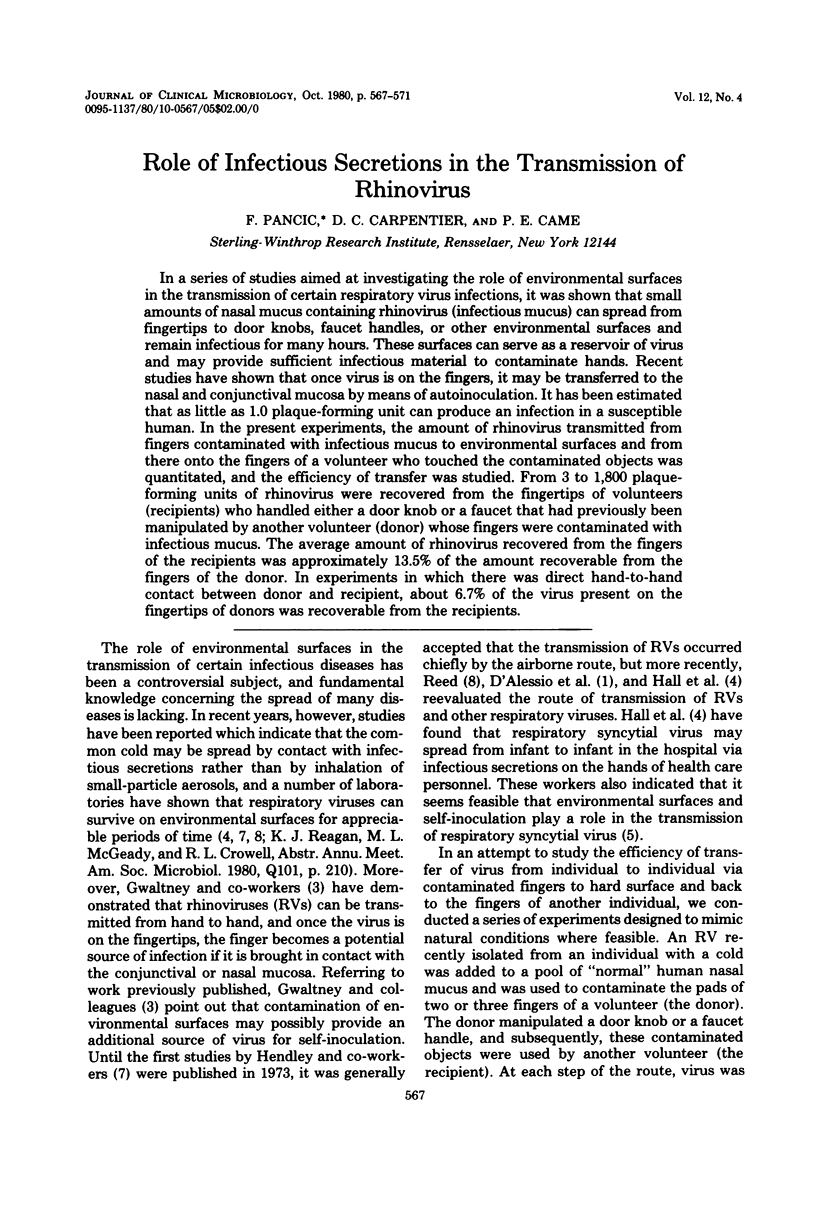
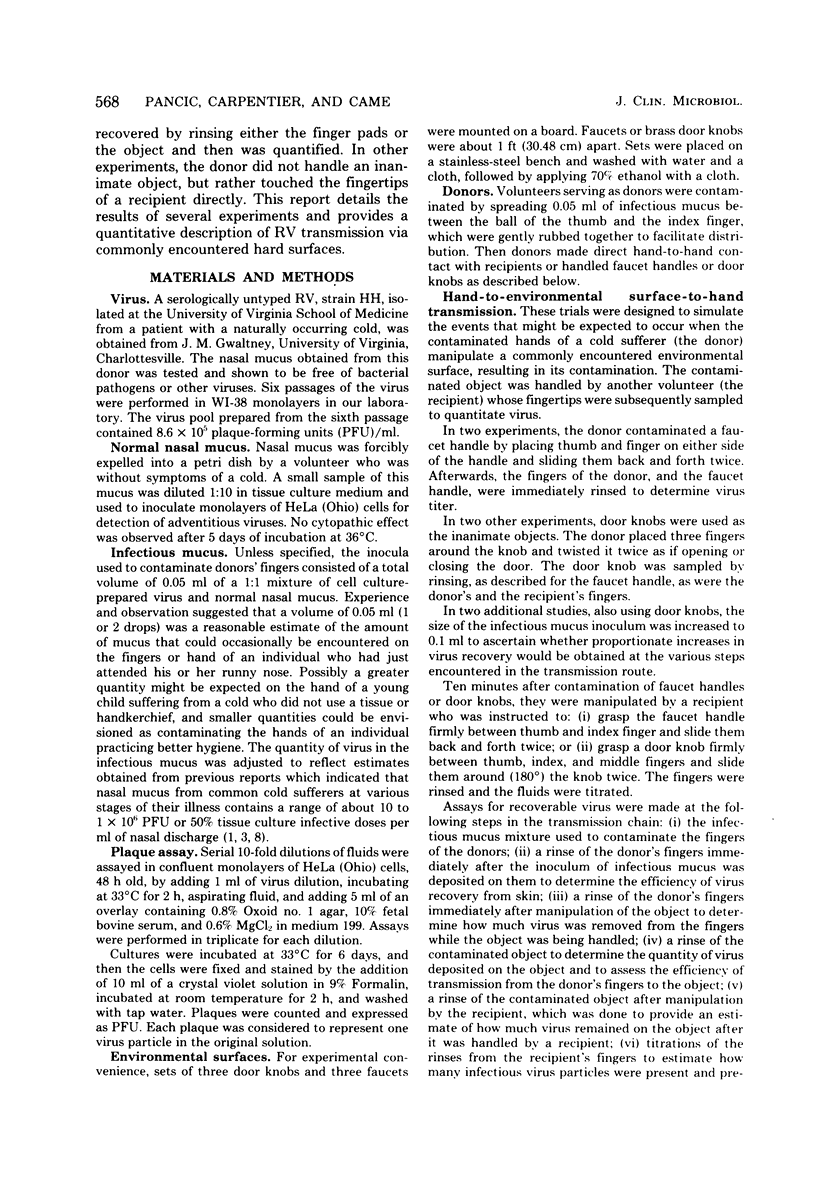
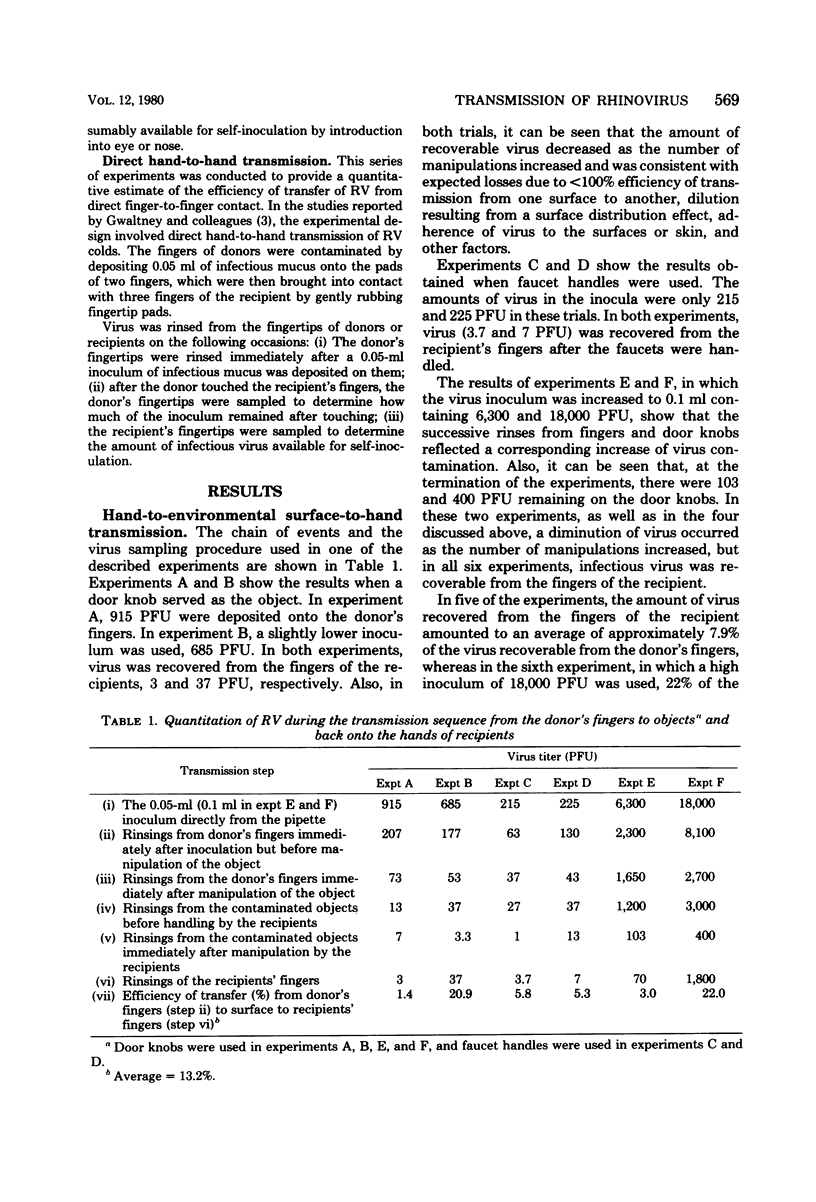
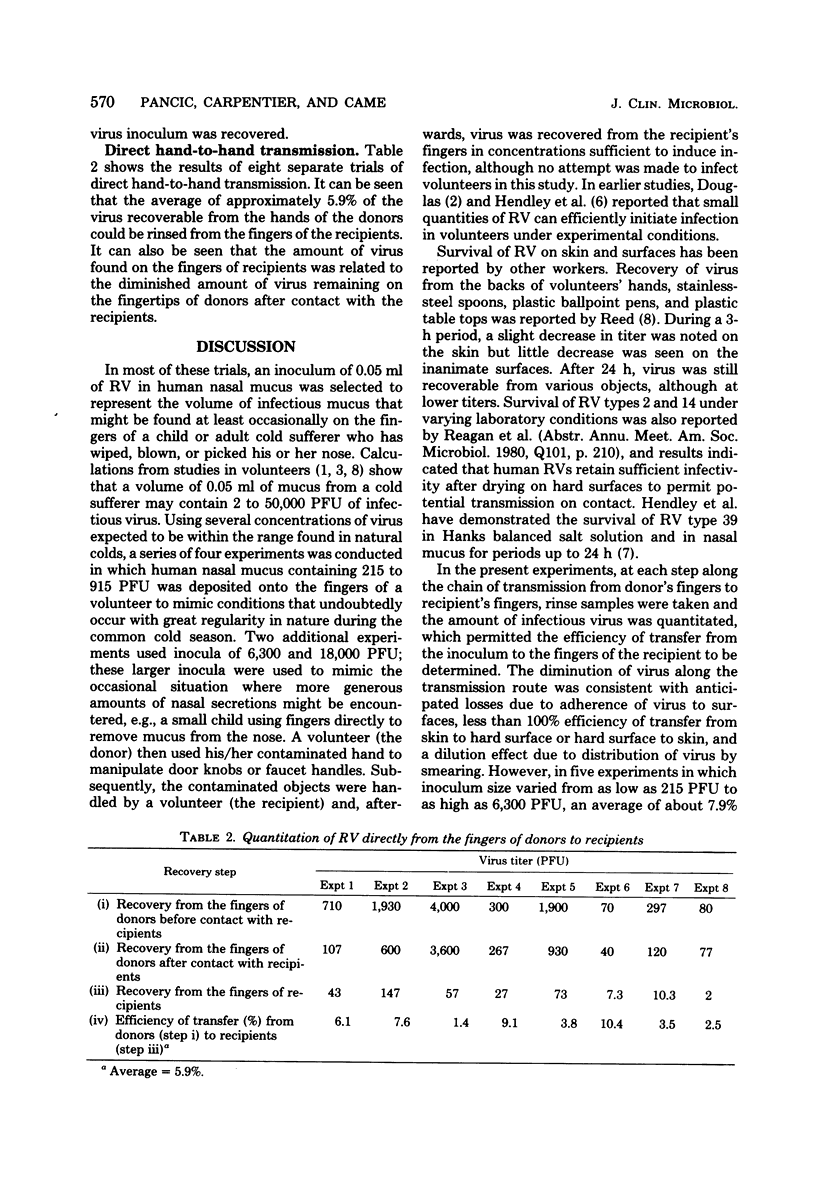
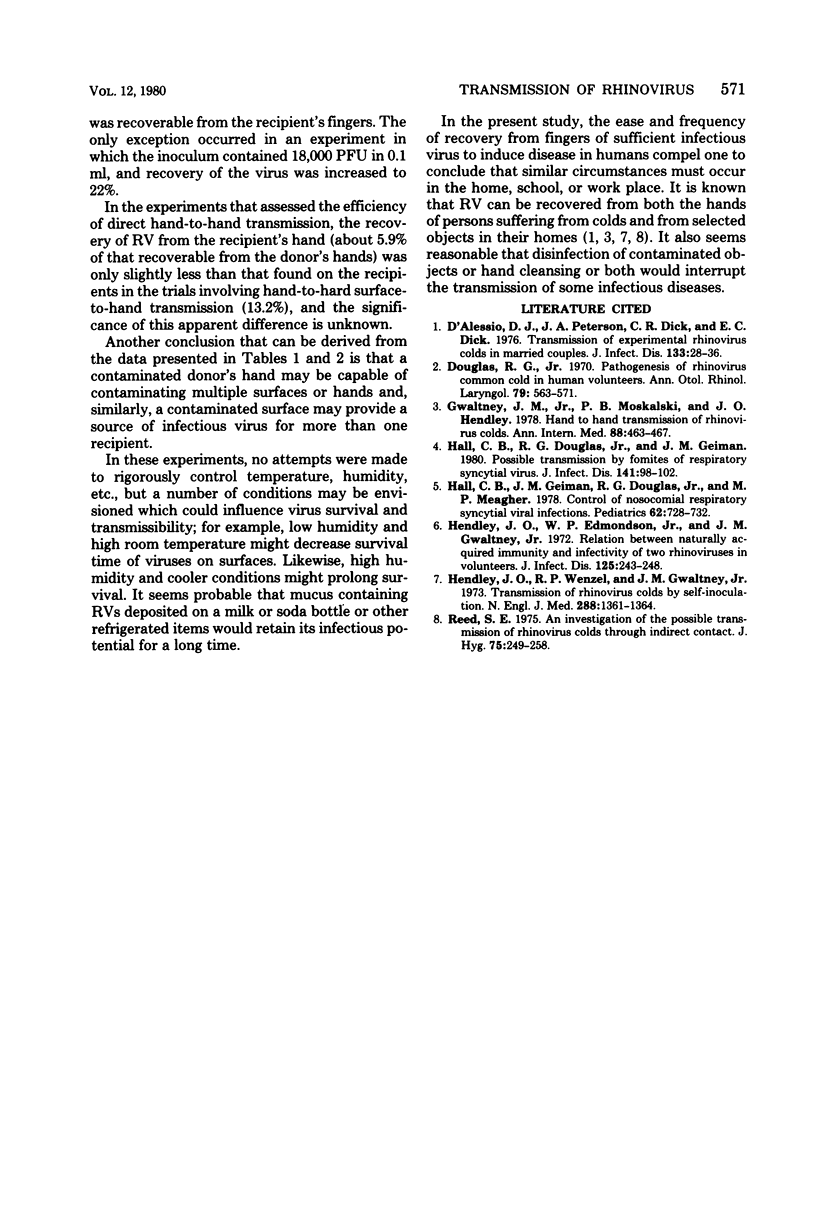
Selected References
These references are in PubMed. This may not be the complete list of references from this article.
- D'Alessio D. J., Peterson J. A., Dick C. R., Dick E. C. Transmission of experimental rhinovirus colds in volunteer married couples. J Infect Dis. 1976 Jan;133(1):28–36. doi: 10.1093/infdis/133.1.28. [DOI] [PubMed] [Google Scholar]
- Douglas R. G., Jr Pathogenesis of rhinovirus common colds in human voluteers. Ann Otol Rhinol Laryngol. 1970 Jun;79(3):563–571. doi: 10.1177/000348947007900320. [DOI] [PubMed] [Google Scholar]
- Gwaltney J. M., Jr, Moskalski P. B., Hendley J. O. Hand-to-hand transmission of rhinovirus colds. Ann Intern Med. 1978 Apr;88(4):463–467. doi: 10.7326/0003-4819-88-4-463. [DOI] [PubMed] [Google Scholar]
- Hall C. B., Douglas R. G., Jr, Geiman J. M. Possible transmission by fomites of respiratory syncytial virus. J Infect Dis. 1980 Jan;141(1):98–102. doi: 10.1093/infdis/141.1.98. [DOI] [PubMed] [Google Scholar]
- Hall C. B., Geiman J. M., Douglas R. G., Jr, Meagher M. P. Control of nosocomial respiratory syncytial viral infections. Pediatrics. 1978 Nov;62(5):728–732. [PubMed] [Google Scholar]
- Hendley J. O., Edmondson W. P., Jr, Gwaltney J. M., Jr Relation between naturally acquired immunity and infectivity of two rhinoviruses in volunteers. J Infect Dis. 1972 Mar;125(3):243–248. doi: 10.1093/infdis/125.3.243. [DOI] [PubMed] [Google Scholar]
- Hendley J. O., Wenzel R. P., Gwaltney J. M., Jr Transmission of rhinovirus colds by self-inoculation. N Engl J Med. 1973 Jun 28;288(26):1361–1364. doi: 10.1056/NEJM197306282882601. [DOI] [PubMed] [Google Scholar]
- Reed S. E. An investigation of the possible transmission of Rhinovirus colds through indirect contact. J Hyg (Lond) 1975 Oct;75(2):249–258. doi: 10.1017/s0022172400047288. [DOI] [PMC free article] [PubMed] [Google Scholar]


